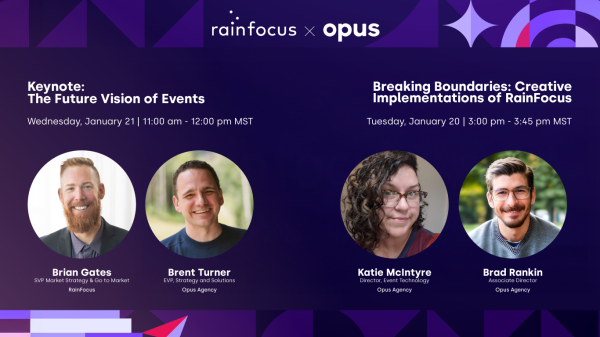Target ROI
Getting the Most Return Out of Today’s Events

The following are select quotes pulled from the original piece.
In today’s economic climate, planning and evaluating meetings and events for bottom line value is more important than ever. Given the economy, price certainly is a critical deciding factor for planners, but other meaningful outcomes include event satisfaction rates, attendance rates and metrics related to the net revenue.
It’s important to remember that when businesses invest in events, there are three primary stakeholders who are looking for return on their investment — and they are looking for different types of returns.
“Take a corporate event as an example, a business executive is looking for revenue-driving returns, like audience generation, pipeline acceleration and sales closed,” says Brent Turner, executive vice president, strategy and solutions at Opus Agency, a planner company that helps orchestrate conferences, meetings, retreats, product launches and industry events.
“While a marketing executive will look for movement on brand affinity, preference, promotion and loyalty, the event executive is looking at their objectives — like their financial model, attendee satisfaction and other event-specific goals such as certifications delivered,” Turner says.
Too often, event professionals will have a single “soup” of measurements and KPIs — and in that soup, they will lose the clarity of marked return on their investments. But Turner points out that by isolating on their business, marketing and event-specific metrics, the events gain focus on the actions required to drive success throughout.
The core ROI measurement tool that Opus Agency uses is their Impact Measurement Framework; it provides the structure for building actionable measurement plans, data specifications and reporting dashboards.
The framework includes the three “I’s” of measurement:
Indicators, the core types of metrics which track progress toward goals.
Initiators, the places where we capture data required for measurement, like the event itself, social media and other extensions.
Inputs, the ways we generate and capture data within each initiator like sales systems, web analytics, RFID badges, social listening, or just asking attendees via surveys and focus groups.
Turner also says that too often the mistakes are connected to unclear objectives — unclear definitions of success. From there, it is about focus. If the event exists to close deals, if that is the core driver of ROI, then map the strategies, audience acquisition, experience design, sessions and more to that goal. “Setting an objective at the ‘center of the bullseye’ is hard. Events can do so much for a business, but with great focus comes greater results,” he says.
And with AI-powered tools making it easier than ever to connect disparate data sources and then turn these connected corpuses of information into insights, businesses will have a greater expectation for data-based insights, intelligence and action.
“This means that the expectations for measuring events will increase, all while the technologies and methodologies will become easier, faster and more standardized,” Turner says. Porcelli also points out that in today’s hybrid-first world, measuring event ROI is an important factor in determining if and how events should happen.
“Organizations are recognizing that this is having a material impact on talent attraction and retention — and so the declining ROI in virtual onboardings and trainings is driving a shift back to in-person to maximize outcomes,” Turner concludes. “The consecutive feedback loop, however it happens, will always affect how planners think about programming.”
by
C&IT





